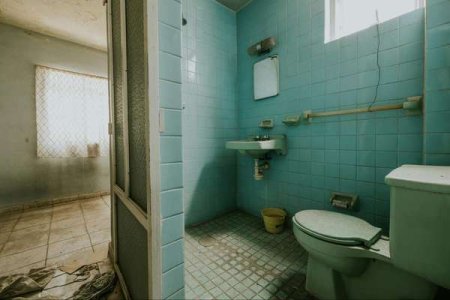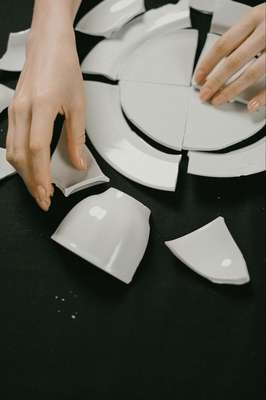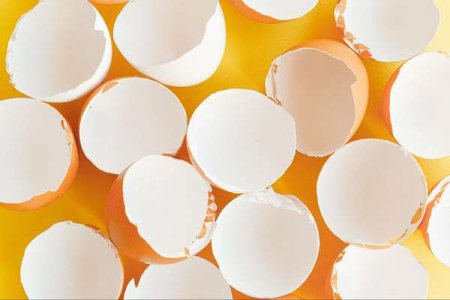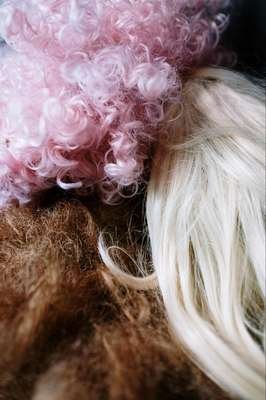You Won't Believe These 10 Weird Hygiene Habits from History—Are You Glad They're Gone?
In the vast story of humanity, there are some truly bizarre chapters, especially when it comes to personal hygiene. While we may now enjoy the luxury of modern toiletries, a look back in time reveals some truly strange—and often gross—methods of staying clean.
So, let’s take a deep dive into history and uncover 10 of the weirdest hygiene habits that will make you appreciate your shampoo and shower gel even more!
1. Corn Cob Cleanliness
Imagine finishing your business and reaching for a dried corn cob instead of a roll of soft toilet paper. Early American settlers—and rural folks well into the 20th century—used these agricultural leftovers to tidy up. Resourceful? Absolutely. Comfortable? Let’s just say that’s up for debate!
2. Read, Rip, Wipe
Before Charmin and Cottonelle took over, printed materials were the go-to for posterior pampering. Newspapers, catalogs, and even the venerable Farmer’s Almanac served double duty as reading material and bathroom tissue. The Almanac was so popular for this that it was sold with a pre-drilled hole, making it ready for hanging in the privy!
3. Ceramic Scrapers
The ancient Greeks and Romans were masters of innovation, but their choice of hygiene tool, the pessoi, might not make their list of top inventions. These ceramic shards, sometimes repurposed from ostraka (ceramic voting pieces), were the abrasive precursors to today’s much gentler toilet paper.
4. Porridge Pits
Porridge as deodorant? That’s right—historical records suggest that oats, typically found at breakfast, were once slathered under armpits to absorb odors and help people smell fresh—or at least fresher than they would otherwise. Talk about a “grain” idea!
5. Urine for a Surprise
Long before Tide and Persil existed, urine was used as a natural laundry detergent. The ammonia in urine made it an effective cleaning agent, and it wasn’t uncommon for people to collect and use it for washing clothes. An all-natural (if slightly odd) solution!
6. Tonsorial Toothpaste
The ancient Egyptians were pioneers in many fields—including dental care. However, their toothpaste wasn’t exactly minty fresh. It included ingredients like crushed eggshells and animal hooves. Not your typical minty formula, but hey, they were fighting cavities with gusto!
7. Mousey Mouthwash
In ancient Rome, a mouthwash that included mouse brains was considered the thing for freshening breath and strengthening gums. Safe to say, Listerine wasn’t worried about competition in the rodent-based mouthwash market.
8. Bloodletting for Beauty
Bloodletting was a common medical practice for treating a variety of ailments, but it was also believed to improve one’s complexion. By draining excess blood, individuals hoped to achieve a more radiant, youthful appearance. Thankfully, modern facials are much less invasive!
9. Lice Wigs
In the 17th and 18th centuries, elaborate wigs were fashionable, but not in the way you might think. To avoid the hassle of constantly delousing their natural hair, some people wore wigs to keep lice away from their scalps. At night, special “wig cages” were even used to keep these lice-infested wigs separate from their heads.
10. Bathing? Maybe Next Month
Regular bathing wasn’t always the norm. In medieval Europe, people bathed infrequently, with some believing it was actually unhealthy. Instead, perfumes and powders were used to mask body odor—leading to the saying, “You can never be too rich or too perfumed.”

As we look back at these quirky hygiene habits, it’s clear that our ancestors were creative, if not always effective, in their efforts to stay clean. It’s a reminder of how far we’ve come—and how resourceful humans were in making the most of what they had.
Next time you’re stocking up on bathroom essentials, take a moment to appreciate the simple luxuries of today’s hygiene products. At least we don’t have to rely on corn cobs or mouse brains anymore!
Are you relieved these practices are in the past, or do you think there’s something to learn from them? Maybe you’ve heard of an unusual hygiene practice passed down through your own family? Share your thoughts and experiences in the comments below—we’d love to hear how you connect with history’s quirky side!
So, let’s take a deep dive into history and uncover 10 of the weirdest hygiene habits that will make you appreciate your shampoo and shower gel even more!
1. Corn Cob Cleanliness
Imagine finishing your business and reaching for a dried corn cob instead of a roll of soft toilet paper. Early American settlers—and rural folks well into the 20th century—used these agricultural leftovers to tidy up. Resourceful? Absolutely. Comfortable? Let’s just say that’s up for debate!
2. Read, Rip, Wipe
Before Charmin and Cottonelle took over, printed materials were the go-to for posterior pampering. Newspapers, catalogs, and even the venerable Farmer’s Almanac served double duty as reading material and bathroom tissue. The Almanac was so popular for this that it was sold with a pre-drilled hole, making it ready for hanging in the privy!
3. Ceramic Scrapers
The ancient Greeks and Romans were masters of innovation, but their choice of hygiene tool, the pessoi, might not make their list of top inventions. These ceramic shards, sometimes repurposed from ostraka (ceramic voting pieces), were the abrasive precursors to today’s much gentler toilet paper.
4. Porridge Pits
Porridge as deodorant? That’s right—historical records suggest that oats, typically found at breakfast, were once slathered under armpits to absorb odors and help people smell fresh—or at least fresher than they would otherwise. Talk about a “grain” idea!
5. Urine for a Surprise
Long before Tide and Persil existed, urine was used as a natural laundry detergent. The ammonia in urine made it an effective cleaning agent, and it wasn’t uncommon for people to collect and use it for washing clothes. An all-natural (if slightly odd) solution!
6. Tonsorial Toothpaste
The ancient Egyptians were pioneers in many fields—including dental care. However, their toothpaste wasn’t exactly minty fresh. It included ingredients like crushed eggshells and animal hooves. Not your typical minty formula, but hey, they were fighting cavities with gusto!
7. Mousey Mouthwash
In ancient Rome, a mouthwash that included mouse brains was considered the thing for freshening breath and strengthening gums. Safe to say, Listerine wasn’t worried about competition in the rodent-based mouthwash market.
8. Bloodletting for Beauty
Bloodletting was a common medical practice for treating a variety of ailments, but it was also believed to improve one’s complexion. By draining excess blood, individuals hoped to achieve a more radiant, youthful appearance. Thankfully, modern facials are much less invasive!
9. Lice Wigs
In the 17th and 18th centuries, elaborate wigs were fashionable, but not in the way you might think. To avoid the hassle of constantly delousing their natural hair, some people wore wigs to keep lice away from their scalps. At night, special “wig cages” were even used to keep these lice-infested wigs separate from their heads.
10. Bathing? Maybe Next Month
Regular bathing wasn’t always the norm. In medieval Europe, people bathed infrequently, with some believing it was actually unhealthy. Instead, perfumes and powders were used to mask body odor—leading to the saying, “You can never be too rich or too perfumed.”
Key Takeaways
- Early American colonists used dried corn cobs as an alternative to toilet paper, and the practice continued in rural America into the 20th century.
- Newspapers, the Sears catalog, and even the Farmer’s Almanac were frequently repurposed as toilet paper. The Almanac was even sold with a pre-drilled hole for easy hanging.
- Ancient Greeks and Romans used pottery shards, known as pessoi, to scrape clean after using the toilet, with some shards originating from ostraka, inscribed pottery used for voting on exiles.
- Historical hygiene hacks such as using porridge as deodorant and urine as detergent demonstrate the creative—if odd—methods people used to stay clean.
As we look back at these quirky hygiene habits, it’s clear that our ancestors were creative, if not always effective, in their efforts to stay clean. It’s a reminder of how far we’ve come—and how resourceful humans were in making the most of what they had.
Next time you’re stocking up on bathroom essentials, take a moment to appreciate the simple luxuries of today’s hygiene products. At least we don’t have to rely on corn cobs or mouse brains anymore!
Are you relieved these practices are in the past, or do you think there’s something to learn from them? Maybe you’ve heard of an unusual hygiene practice passed down through your own family? Share your thoughts and experiences in the comments below—we’d love to hear how you connect with history’s quirky side!










